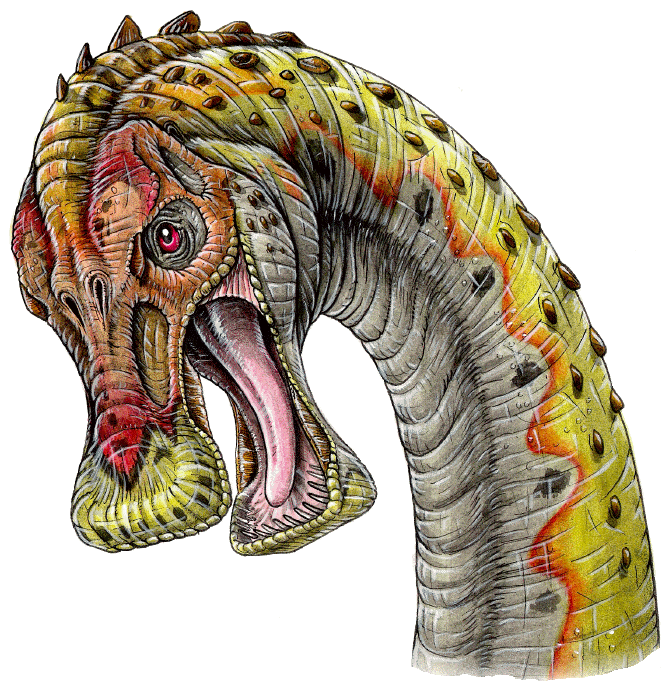|
|
|
Bonitasaura salgadoi (Sebastian Apesteguia, 2004) |
 |
|
Name Means: |
"Bonita Reptile" |
Length: |
30 feet (9 meters) |
|
Pronounced: |
BE-ni-TE -SAWR-us |
Weight: |
40,000 lbs (18 met. tons) |
|
When it lived: |
Late Cretateous - 65 MYA |
|
|
|
Where found: |
Patagonia, Argentina |
|
|
|
|
This fascinating dinosaur was discovered in 2004. It has been classified as a titanosaur, a sauropod, closely related to the Apatosaurus (formerly known as the Brotontosaurus). This group of animals had always shown little diversity in the head, especially in the mouth design. Bonitasaura salgadoi has changed that. It has an unusual, rectangular jaw filled with two types of teeth. There is a set of sharp pointed teeth in the front of its mouth that were continuously replaced. They are immediately followed by a continuous wedge-shaped set that filled the middle and rear part of its mouth. These unusual shaped teeth were used to "guillotine" hard plant material.
The specimen is a juvenile known from bones from most of the major parts of the body. A mature specimen may have been much larger. It's interesting jaw throw an interesting wrench in the recent interpretations of Antarctosaurus as a chimera made up of saltasaurid postcranial material and a rebbachisaurid jaw (rebbachisaurids are also known to have jaws with strongly squared-off front margins):
It was discovered by paleontologists of the Argentine Museum of Natural Sciences. They knew that Walter Schiller and Santiago Roth had found some wonderful fossils in the remote Patagonia wilderness in 1922, but the exact location had been lost for many years. In searching for clues, they located a woman, named Doña Tika. Known as the "Tika Woman," she was 98 years old and blind, but as a young woman she had assisted the Schiller-Roth expedition of 1922. She was able to lead them to the site. The dinosaur was named after the Bonita Mountains, where it was found.
|
|
|
|
|
|
|
|
|
Edugraphics.Net | Feenixx Publishing |
|
|
|
|